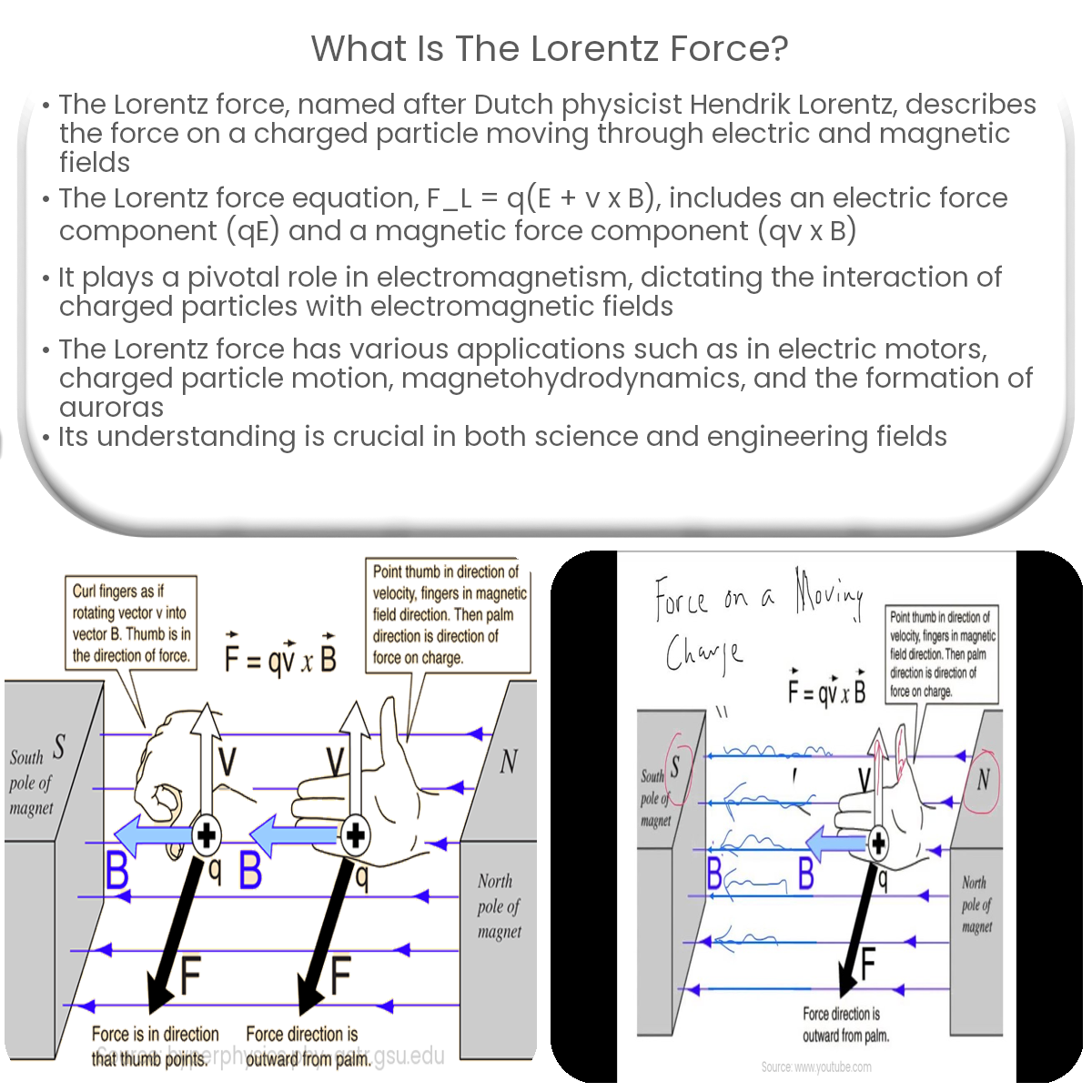The Lorentz force is the force experienced by a charged particle in electric and magnetic fields, crucial in electromagnetism and various applications.
The Lorentz Force
The Lorentz force is a fundamental concept in electromagnetism and describes the force experienced by a charged particle moving through an electric and magnetic field. Named after the Dutch physicist Hendrik Lorentz, it plays a crucial role in understanding the interaction of charged particles with electromagnetic fields.
Equation and Components
The Lorentz force equation is given by FL = q(E + v x B), where FL represents the Lorentz force, q is the charge of the particle, E is the electric field vector, v is the velocity vector of the charged particle, and B is the magnetic field vector. The equation consists of two parts:
- The electric force component (qE): This force is the product of the charge and the electric field. It acts in the direction of the electric field for a positive charge and in the opposite direction for a negative charge.
- The magnetic force component (qv x B): This force is the result of the cross product between the velocity of the charged particle and the magnetic field. The magnetic force is always perpendicular to both the velocity and the magnetic field, and its direction can be determined using the right-hand rule.
Applications and Importance
The Lorentz force is essential in numerous applications and phenomena:
- Electric motors and generators: The interaction between electric currents and magnetic fields in motors and generators produces a torque, resulting from the Lorentz force, which allows these devices to function.
- Charged particle motion: The Lorentz force governs the motion of charged particles in electromagnetic fields, such as electrons in a magnetic confinement fusion reactor or particles within a cyclotron.
- Magnetohydrodynamics: In magnetohydrodynamics, the study of electrically conducting fluids like plasmas, the Lorentz force plays a key role in determining the fluid’s behavior in the presence of magnetic fields.
- Auroras: The beautiful displays of auroras are a result of charged particles from the solar wind interacting with Earth’s magnetic field, causing the particles to spiral and emit light due to the Lorentz force.
In conclusion, the Lorentz force is a fundamental concept in electromagnetism, governing the behavior of charged particles in electric and magnetic fields. It has widespread applications in science and engineering, from electric motors to the study of plasmas and the formation of auroras.



